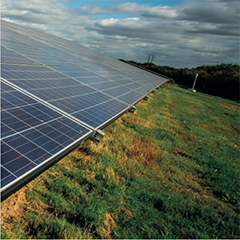The UK’s battery storage market has great potential, but the current political uncertainty in the country means that many projects are being put on the back burner. In which areas does it still make sense to invest in storage systems? PES wanted to find out more from Lawrie Wilson, Area Manager for the UK and ROI at Tesvolt, and Simon Patterson, CEO of MSP Technologies.
PES: Hi, we’ve been working with Tesvolt for a good few years now so it’s great to welcome you to PES Solar/PV. As always, we have new readers, so could you give us a brief overview of the company to bring them up to date?
Lawrie Wilson: We specialise in high-performance lithium-ion battery storage systems for commercial and industrial use. In the past few months, we have been developing our Megawatt Container which ensures maximum cost efficiency for the lithium high-voltage storage system, making it around 40% more economical than its predecessor. We will be presenting the TPS 2.0 and our other products from 4.8 kWh up to several megawatt hours at Intersolar in Munich.
PES: The UK energy storage market has been hit by uncertainty. What is your take on the current situation?
Simon Patterson: We are seeing two developments that are slowing many projects down. First, we don’t know what Brexit will mean for a lot of projects carried out with European partners. Also, the feed-in tariff scheme ended at the end of March, which means that any photovoltaic installations installed after that date will not receive any subsidies.
Owners of new installations will have to earn money either by selling the electricity they generate or consuming it themselves on site. What’s more, electricity prices in the UK are still fairly low. Even despite the increase in recent months, our prices are still lower than those in other countries. These developments are making it difficult to design and plan long-term projects with battery storage systems.
LW: The end of the feed-in tariff scheme does open up an opportunity for storage systems in combination with photovoltaic installations, however, if electricity can be sold at a higher price at different times of the day, a high-performance battery storage system can be used as a buffer. By producing energy cheaply and selling it in times of peak demand, photovoltaic installations could become a worthwhile investment again.




























